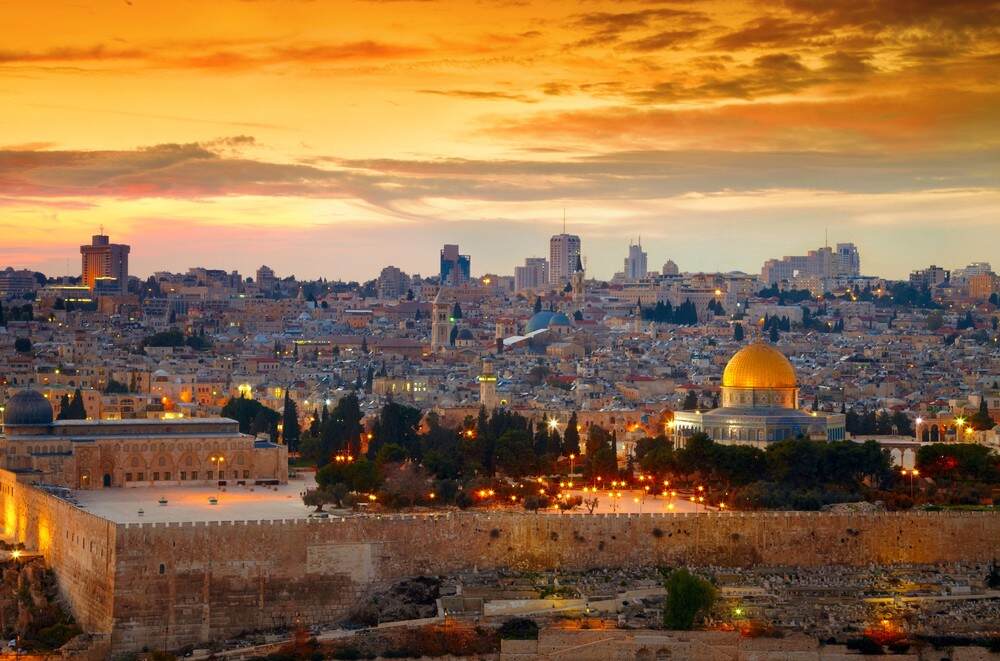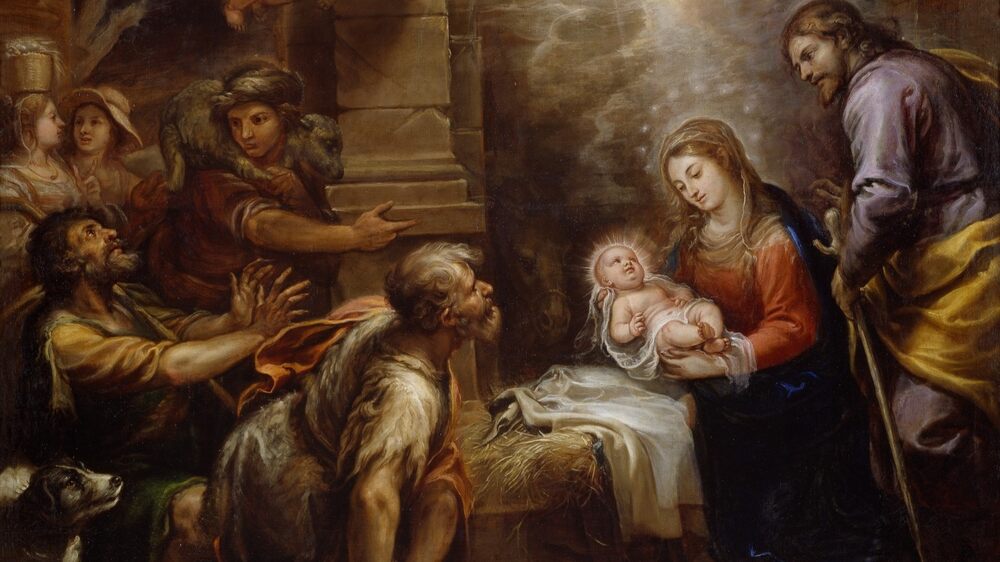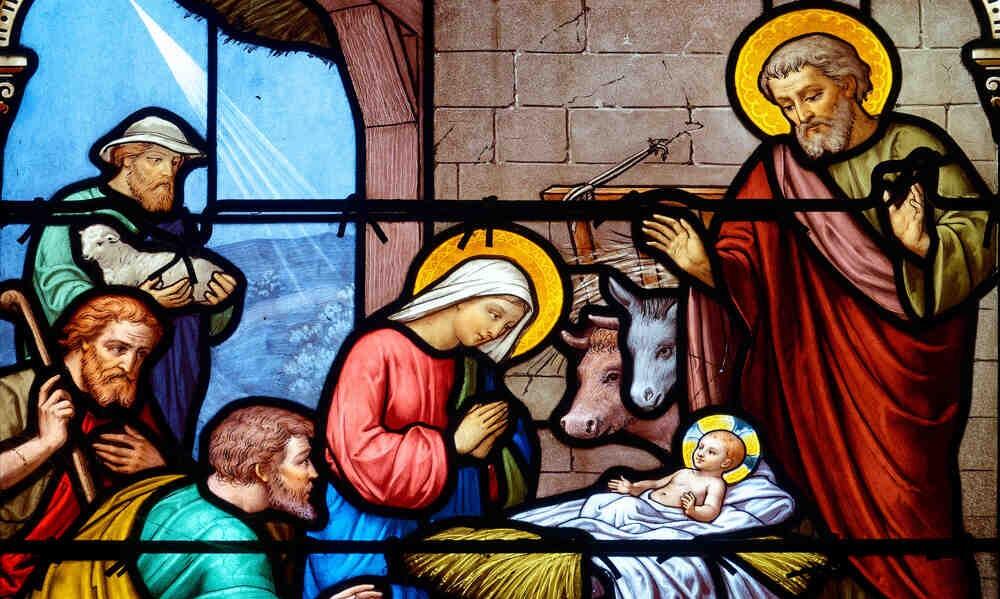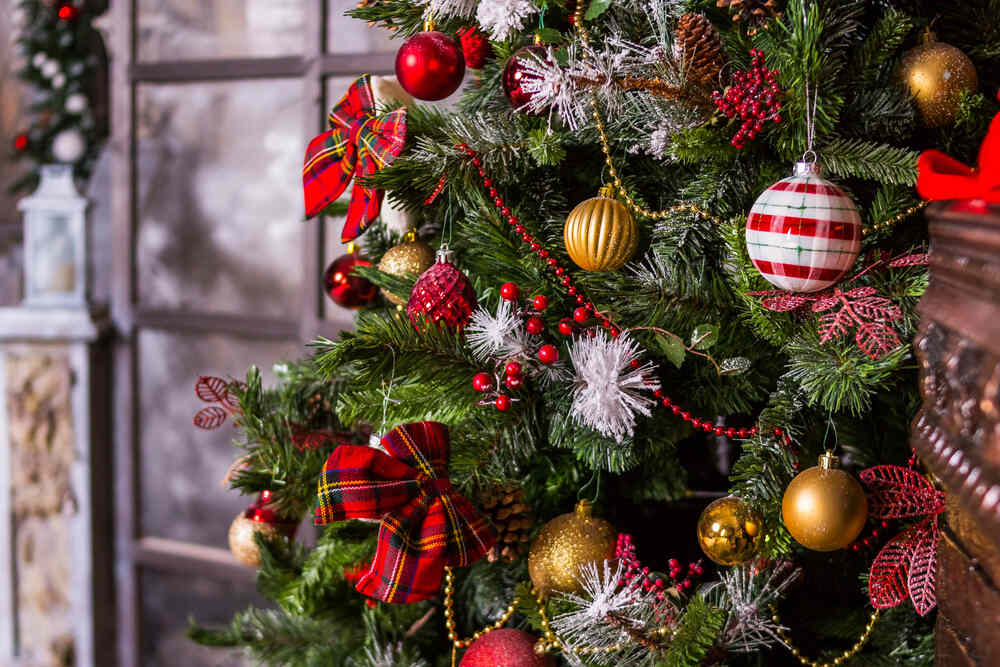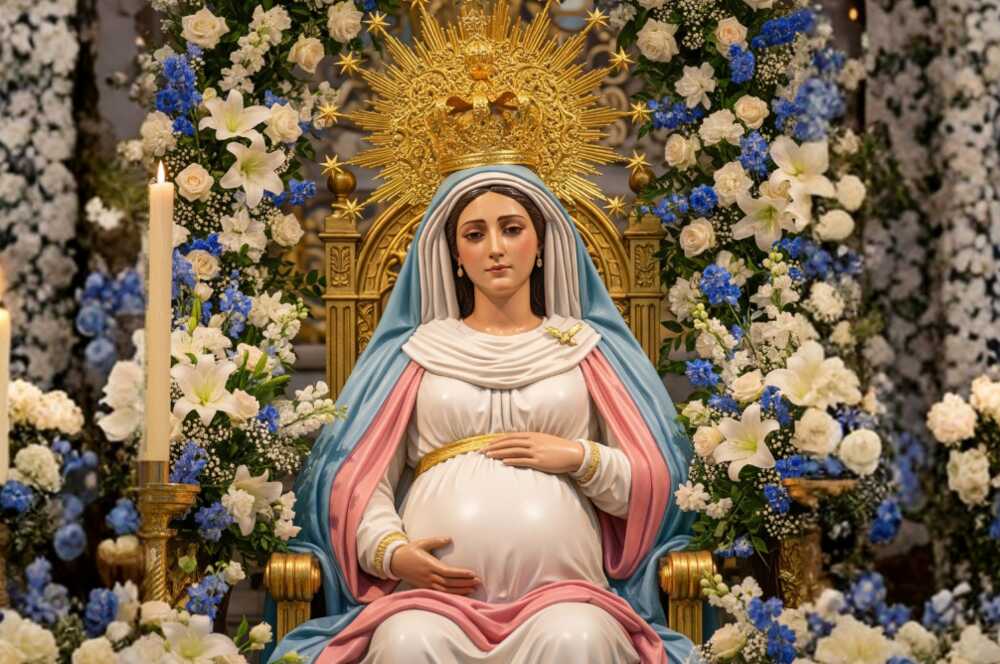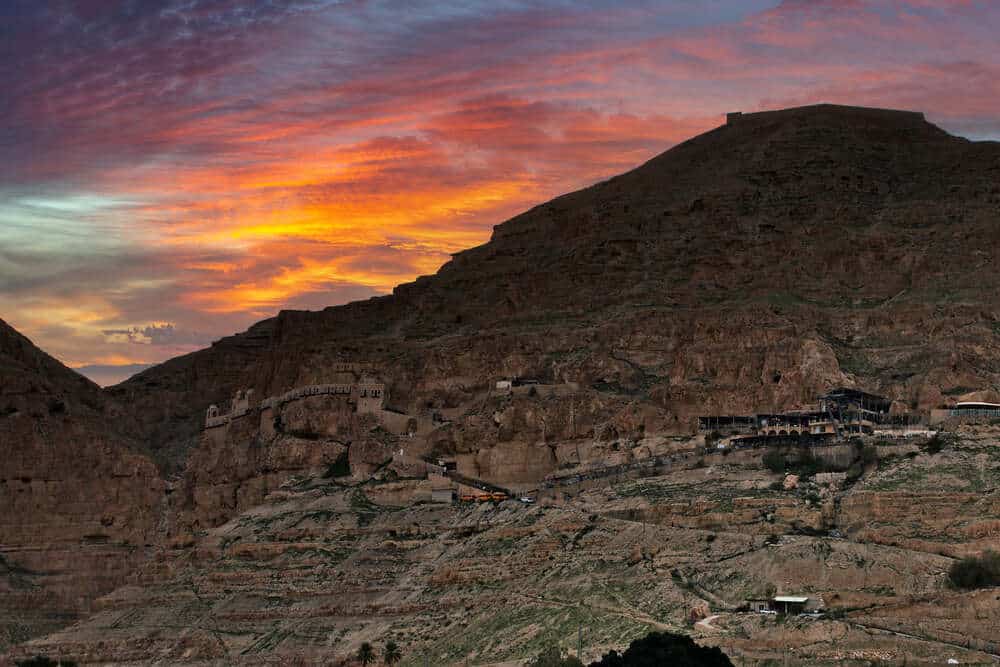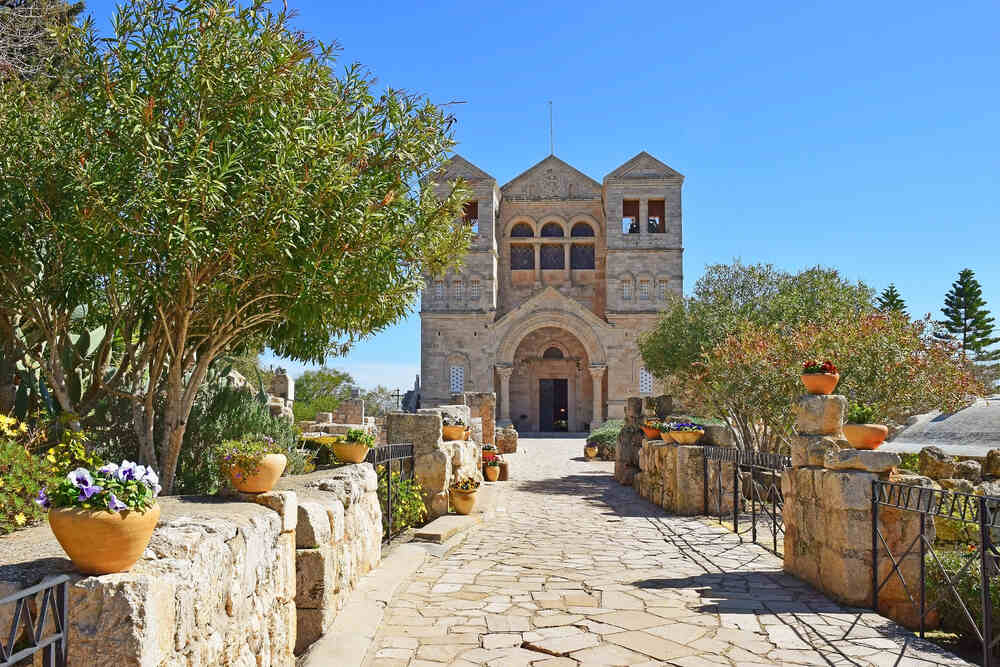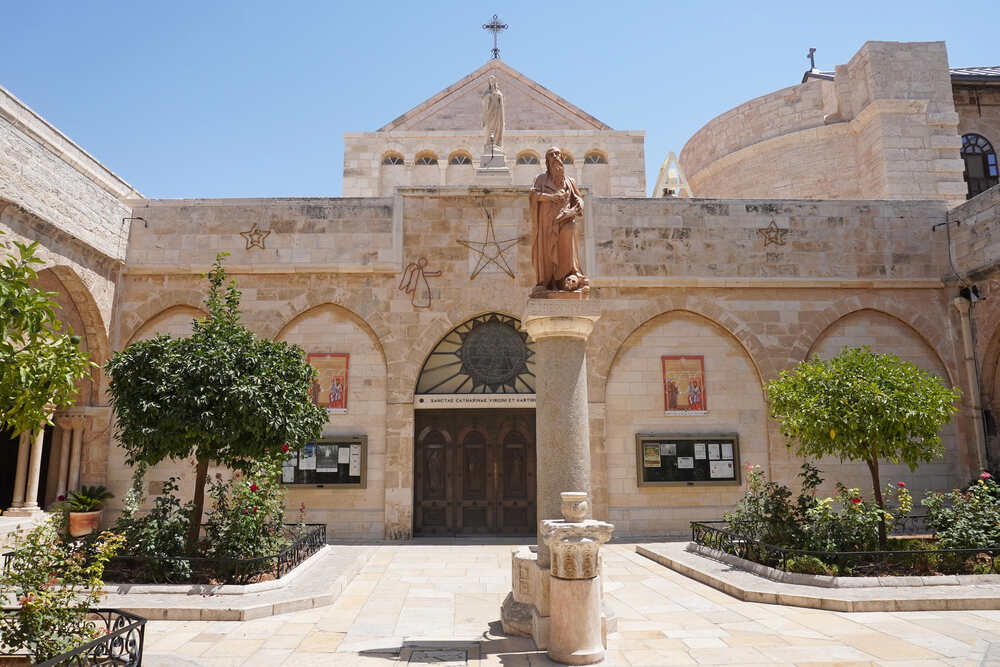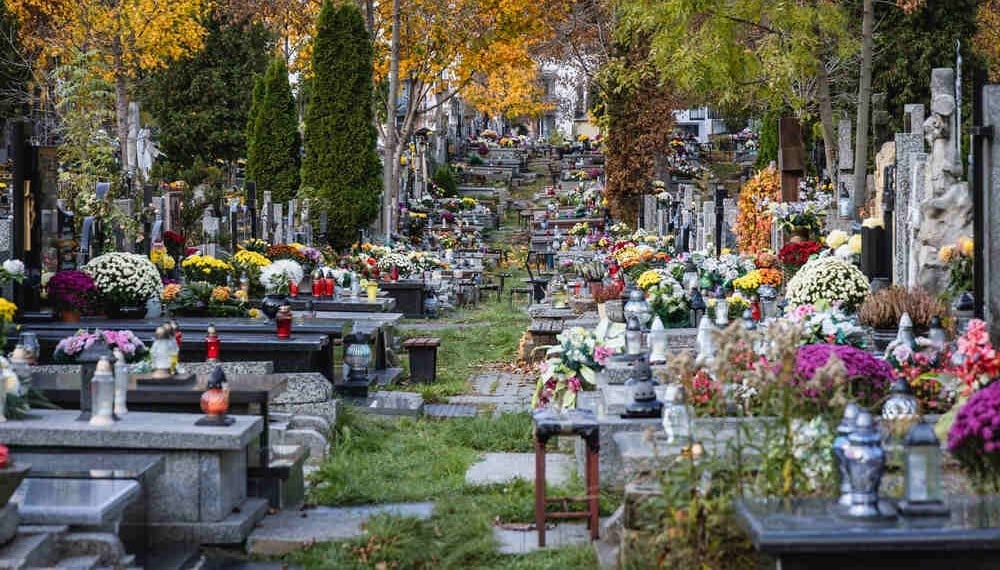Of all Christian pilgrimage destinations, the Holy Land is without a doubt the most desired. What Catholic wouldn’t long to walk the very streets where our Divine Savior once walked? For over 2,000 years, countless pilgrims have journeyed to the homeland of Jesus Christ — in times of peace and in times of trial alike.
Pilgrimages began on Easter Sunday itself, when the Lord’s tomb was found empty. Saint Peter and Saint John were the first to arrive after hearing the women’s report:
Then the other disciple also went in, the one who had arrived at the tomb first, and he saw and believed. (John 20:8)
Since that day, pilgrims have followed the same paths that Jesus once walked — to reflect, to marvel, and to grow in faith and love. In the holy places where He lived, moved, and carried out His ministry, they have meditated on the mysteries of His life. And, as Origen once said, they have resolved to follow in the footsteps of the Master.
Are you planning to travel to the Holy Land? In this post, we share a short guide to 10 must-see churches that every Catholic should visit on a pilgrimage to the Holy Land. While there are many more, we have chosen these ten because they commemorate the most important events of our faith. Their selection is based on the mysteries of the Holy Rosary.
1. Basilica of the Annunciation (Nazareth, Galilee)
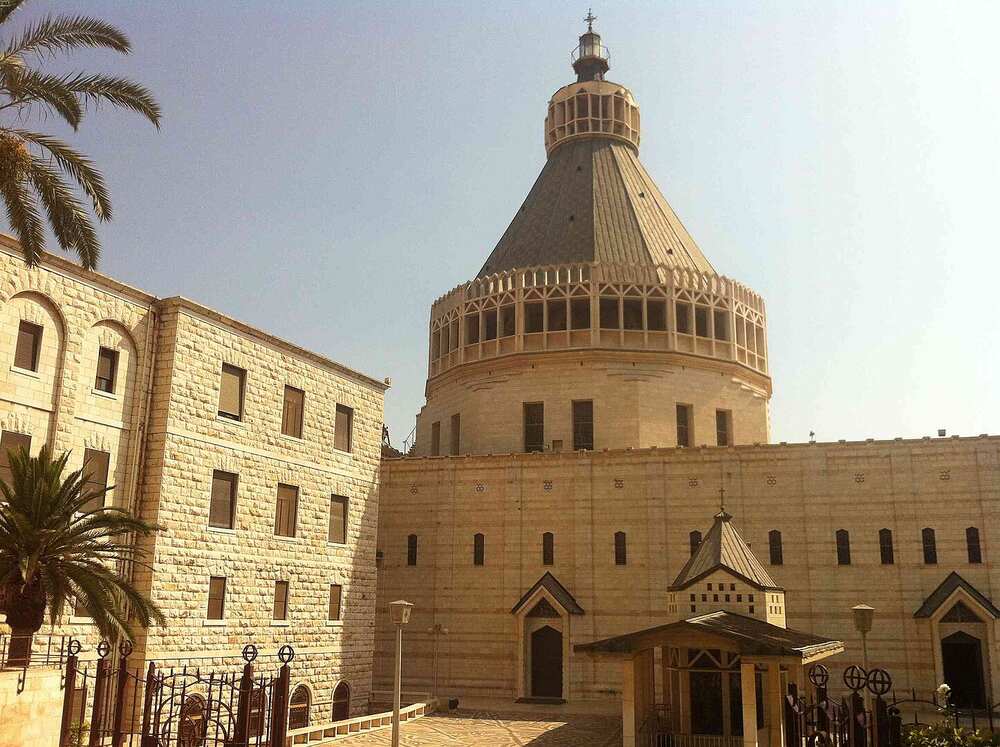
The Basilica of the Annunciation, in Nazareth (Israel), stands over the house where the Archangel Gabriel announced to the Blessed Virgin Mary that she would be the Mother of the Savior. Guarded by the Franciscans, it is the largest Christian church in the Middle East and one of the most important pilgrimage destinations in the Holy Land.
The present building, consecrated by Pope Paul VI in 1969, combines modern architecture with Byzantine and Crusader remains. The façade, designed by sculptor Angelo Biancini, represents the mystery of the Incarnation through reliefs and biblical inscriptions. Outside, a courtyard surrounded by a portal displays mosaics of Marian devotions from around the world, donated by various countries.
The basilica has two levels: the lower level houses the Grotto of the Annunciation, believed to be Mary’s home. A Latin inscription recalls: “Verbum caro hic factum est” (“Here the Word was made flesh”). Visitors can see archaeological remains, mosaics, and walls from the ancient Byzantine and Crusader churches.
The upper church, bright and spacious, is adorned with Marian images sent from all over the world, colorful stained glass, and a majestic mosaic proclaiming the Church as “One, Holy, Catholic, and Apostolic.”
From the upper courtyard, visitors can access the archaeological museum, which preserves artifacts found during excavations and traces the development of the sanctuary through the centuries. The entire complex invites pilgrims to contemplate the mystery of the Incarnation, in the very place where Mary uttered her “yes” and offered herself as the handmaid of the Lord.
- For more information about this church, visit the website of the Custody of the Holy Land.
- Location: Al-Bishara St 12, Nazareth, Israel.
2. Church of the Visitation (Ein Karem, Jerusalem)
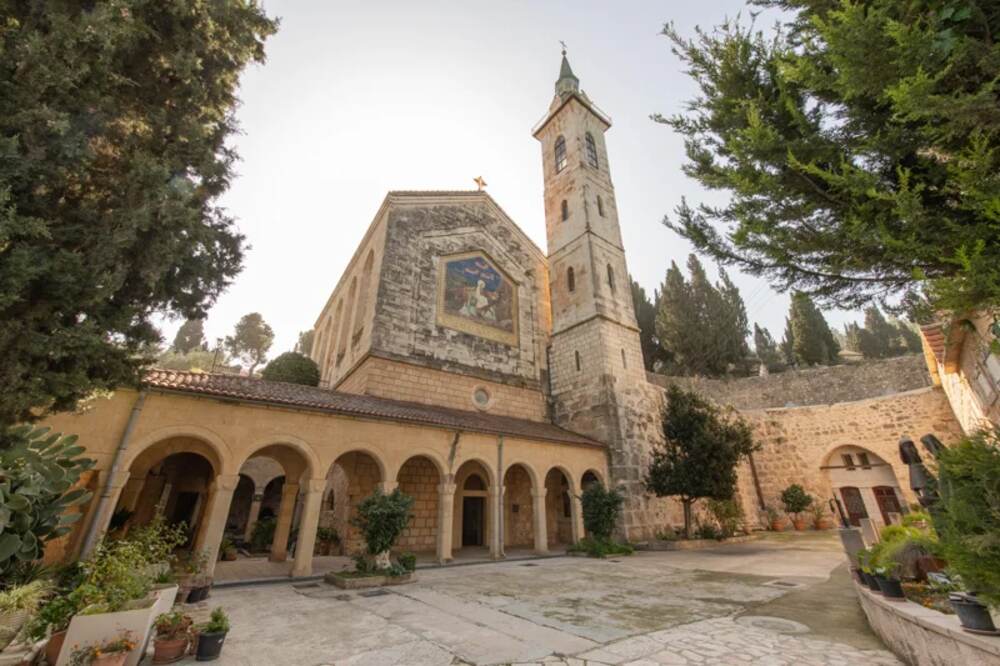
The Church of the Visitation is located in the picturesque neighborhood of Ein Karem, in Jerusalem.
This sacred site commemorates the Visitation of the Virgin Mary to her cousin Elizabeth, the mother of John the Baptist, as described in the New Testament (Luke 1:39-56). Tradition holds that it wa shere that Mary proclaimed her famous song of praise, the Magnificat. In the courtyard of the sanctuary visitors can find ceramic plaques displaying the text of the Magnificat in more than 50 languages.
The sanctuary is built on a rocky hillside surrounded by cypresses trees. The first structure is attributed to Saint Helena, mother of Constantine, in the fourth century. The current two-level shrine was designed by Italian architect Antonio Barluzzi and constructed between 1938 and 1955. The church belongs to the Custody of the Holy Land, administered by the Franciscan Order.
The church is divided into two levels:
- Lower Level (Crypt): Restored in 1946, this level is dedicated to Saint Elizabeth. It preserves remains of earlier Byzantine and Crusader structures, including an ancient cistern and the Rock of Hiding. This rock is linked to an apocryphal tradition in which Elizabeth and the infant John fled to escape Herod the Great’s massacre of the innocents. The crypt is decorated with murals depicting the meeting of the cousins and their flight.
- Upper Level: This single, festive in character, is dedicated to the glorification of Mary throughout Christian history. It apse features an image of the Virgin surrounded by saints and believers. Five decorative panels highlight key Marian moments such as the Council of Ephesus (which defined her as Mother of God), the defense of the Immaculate Conception by John Duns Scotus, and the Battle of Lepanto.
The church façade is adorned with a mosaic by B. Biagetti depicting Mary on her journey from Nazareth to Ein Karem to visit Elizabeth.
- For more information about this church, visit the website of the Custody of the Holy Land.
- Location: Q575+R57 Jerusalem, Israel.
3. Basilica of the Nativity of the Lord (Bethlehem, Palestine)
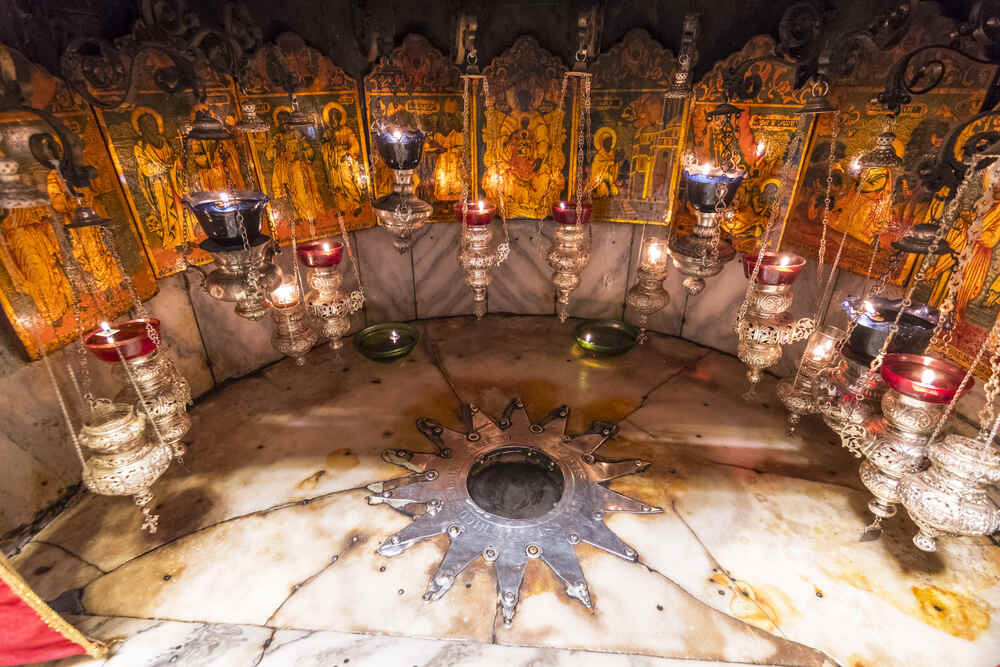
Located in Bethlehem, Palestine, the Basilica of the Nativity is one of the oldest continuously operating Christian churches in the world. Venerated as the birthplace of Jesus Christ, its profound spiritual and historical significance earned it the designation as a World Heritage Site by UNESCO in 2012.
The basilica stands over the Grotto of the Nativity, the cave that Christian tradition identifies as the manger where Jesus was born. Although the site was desecrated in the year 135 by the emperor Hadrian, who established a shrine to Adonis there, emperor Constantine I, together with his mother Helena, ordered the construction of the first Christian chruch in the fourth century. Inaugurated in 339, that early Christian building was later destroyed during the Samaritan revolts in 529 or 556.
Reconstruction came in the 6th century under the Byzantine emperor Justinian I. The structure—largely preserved to this day—even survived the Persian invasion of 614, thanks, according to tradition, to a depiction of the Magi dressed as Persian priests, which moved the invading commander.
The Basilica of the Nativity is a shared place of worship for several Christian denominations present in the Holy Land: the Greek Orthodox Church, the Armenian Apostolic Church, and the Catholic Church, with the Syrian, Coptic, and Ethiopian Orthodox churches holding minor rights.
The main entrance is through the iconic “Door of Humility,” a small opening just 1.2 meters high, designed during the Ottoman period to prevent riders and animals from entering—symbolically inviting all who enter to bow in reverence.
Beneath the basilica lies the Grotto of the Nativity, considered the exact spot of Jesus’ birth. There you will find:
- The Place of the Nativity: Marked by a 14-point silver star with a Latin inscription, located beneath the Altar of the Nativity. The 14 points recall the three sets of generations mentioned in Jesus’ genealogy according to the Gospel of Matthew. This section is under the care of the Greek Orthodox and Armenian Apostolic Churches.
- The Manger Grotto: Under Catholic custody, this adjacent area marks the site where Mary laid the newborn child. It contains the Altar of the Magi.
- Underground Chapels: Accessible from the adjoining Catholic church, a network of chapels is dedicated to Saint Joseph, the Holy Innocents, Saint Catherine, and Saint Jerome, who, according to tradition, lived there while translating the Bible into Latin (the Vulgate).
- For more information about this Church, visit the website of the Custody of the Holy Land.
- Location: P635+P2C, Bethlehem Territory.
4. Sanctuary of the Baptism of the Lord (Al-Maghtas, Jordan)
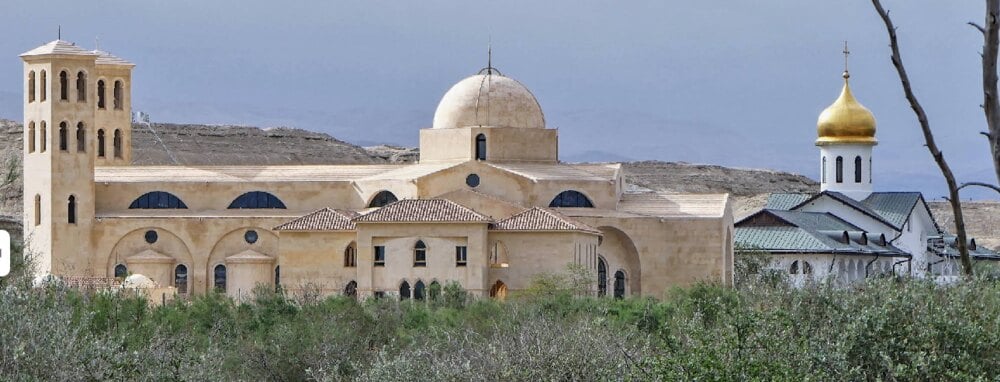
The Sanctuary of the Baptism of the Lord was inaugurated in January 2025. In 2003, King Abdullah II of Jordan had donated 30 dunams of land for the construction of a Catholic church in Al-Maghtas. On May 10, 2009, Pope Benedict XVI, accompanied by the King and the Hashemite family, laid the first stone of the Catholic church and monastery of Al-Maghtas.
Today, the site includes the church (sanctuary), two monasteries for friars and nuns, gardens, a visitors’ center, parking, a walking path, and the Hill of the Cross, which offers breathtaking views of the mountains of the Holy Land.
Covering 2,200 square meters, the church is one of the largest in the Middle East. It holds a significance comparable to that of the Basilica of the Annunciation, the Church of the Nativity, and the Church of the Holy Sepulchre.
The friars and nuns of the Institute of the Incarnate Word are responsible for maintaining the site, welcoming pilgrims, and offering prayers and Masses.
Built with Tafouhi stone (a yellowish stone from Hebron), the church features stained glass crafted in Lebanon in the style of the Cathedral of Chartres.
With capacity for over 1,000 faithfulls, the church hosts the annual pilgrimage to Al-Maghtas every January. During this celebration, Masses, prayers, and the renewal of baptismal vows take place in commemoration of the Feast of the Baptism of Christ.
- For more information about this church, visit the website of the Sanctuary of the Baptism of the Lord.
- Location: Baptism site of Jesus Christ Al Maghtas, Jordania.
5. Church of the Wedding at Cana (Kfar Kanna, Galilee)
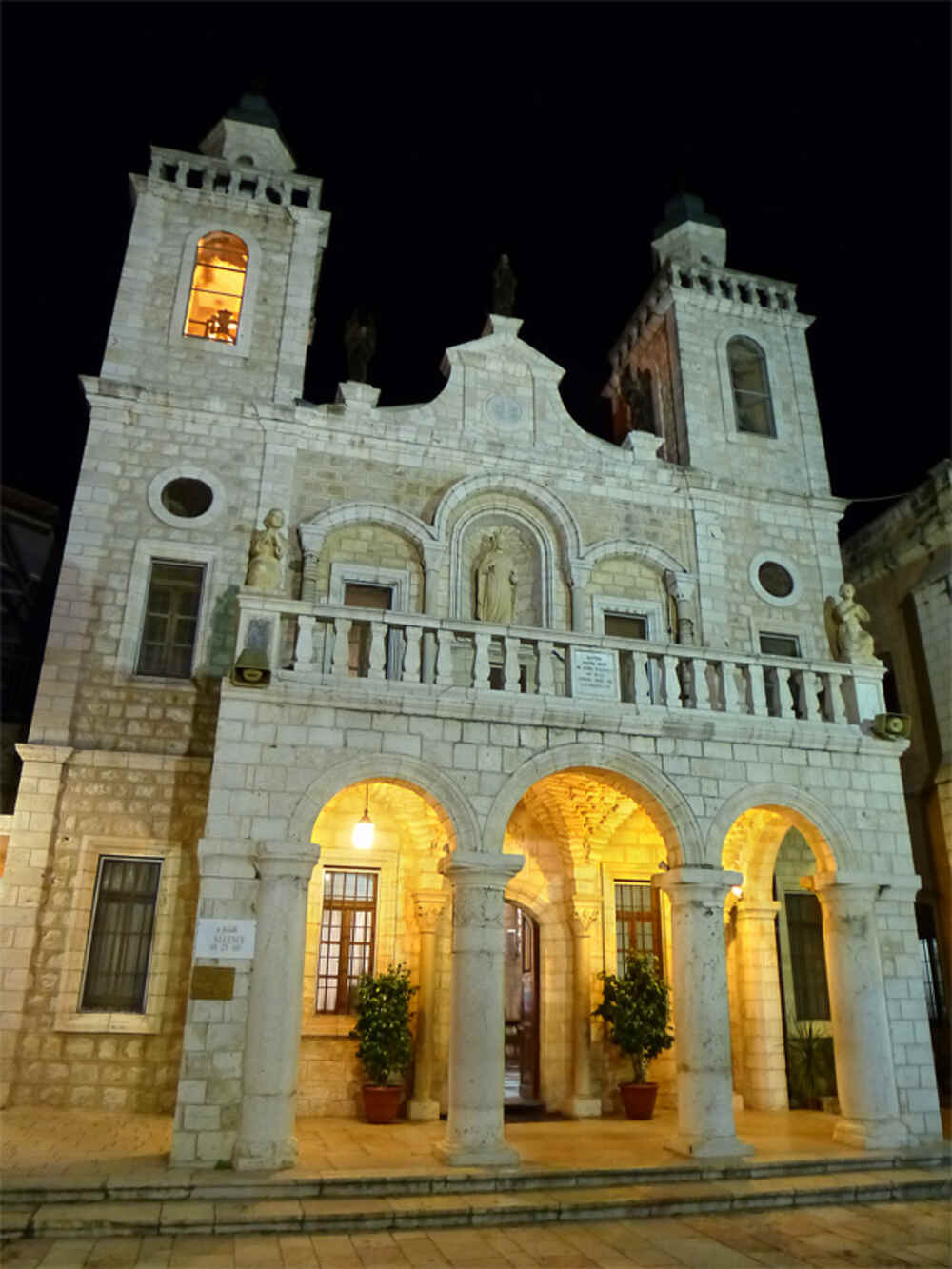
The Church of the Wedding at Cana, located in Kafr Kanna (Cana), in Lower Galilee, Israel, commemorates the miracle in which Jesus transformed water into wine during a wedding feast. The site has held religious significance since the 4th century, when a synagogue once stood there, later replaced by a Christian chapel that fell into ruin around 1551.
The Franciscans of the Custody of the Holy Land began acquiring the property in 1641, completing the purchase in 1879. The current façade was built in 1901, and the altar was consecrated in 1906 by Bishop Angelo Roncalli, the future Saint John XXIII. Between 1997 and 1999, archaeological studies were conducted, followed by a full restoration of the church.
Today, many pilgrim couples visit this sacred site to renew their marriage vows.
- For more information about the Church of the Wedding at Cana, visit the website of the Custody of the Holy Land.
- Location: P.O.B. 1580, 16930 Kafr Kanna, Israel.
6. Church of the Beatitudes (Tabgha, Sea of Galilee)
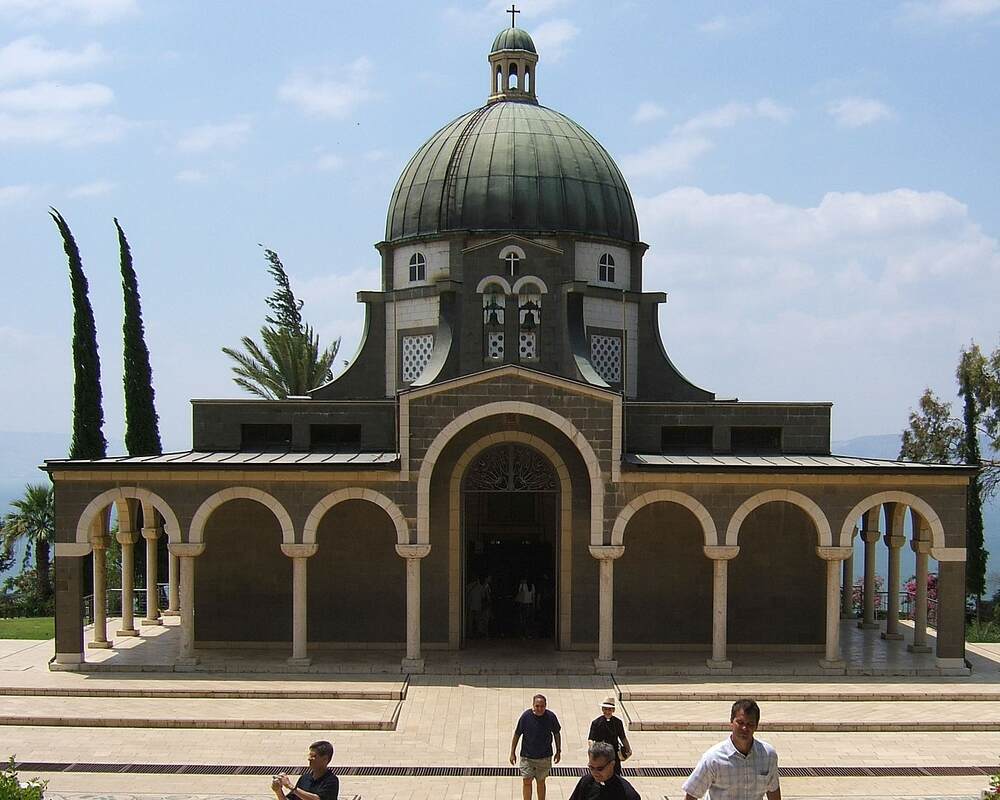
The Church of the Beatitudes, built between 1936 and 1938 by Antonio Barluzzi, stands on a hill overlooking the Sea of Galilee, near Tabgha and Capernaum, on the traditional site where Jesus delivered the Sermon on the Mount. Since the 4th century, pilgrims have come to this revered place in the Holy Land.
The church has an octagonal floor plan, symbolizing the eight beatitudes, and is surrounded by a portico. Inside, the central altar is crowned by an alabaster arch, and the tabernacle, elevated on porphyry, displays bronze-gilded scenes of the Passion. Eight stained-glass windows in the dome bear the beatitudes from the Gospel of Matthew. On the floor, a mosaic features symbols of virtues such as faith, charity, and prudence.
Today, the church is under the care of the Franciscan Missionary Sisters.
- For more information about this church, visit the website of the Church of the Beatitudes.
- Location: 90, Tiberias, Israel.
7. Basilica of the Transfiguration (Mount Tabor, Galilee)
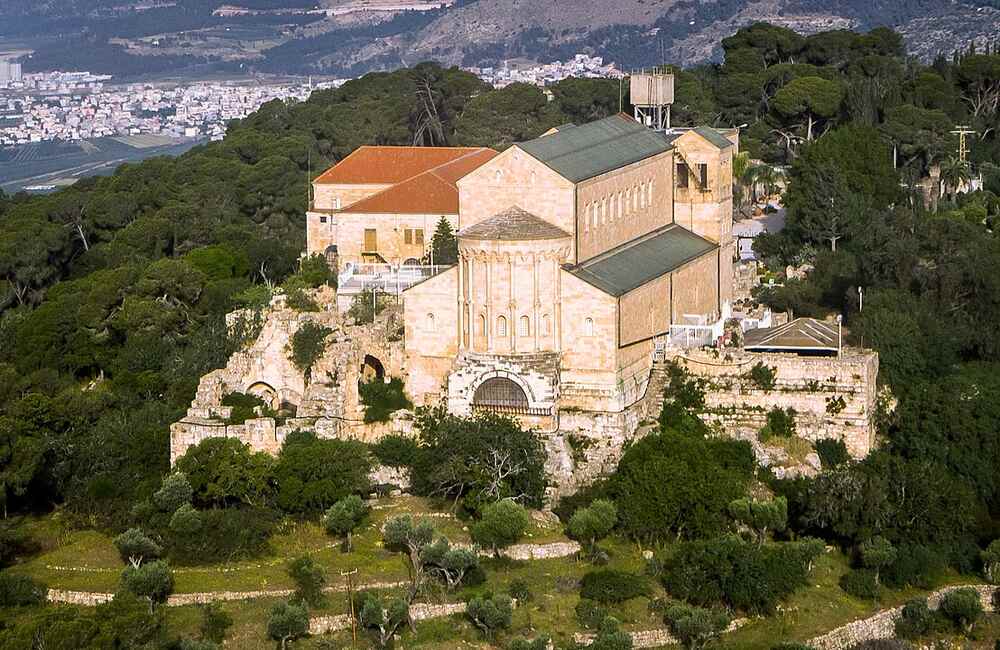
Mount Tabor, located east of Nazareth, rises 588 meters above sea level and stands out among the hills of Galilee. Since the early centuries, Christians have identified it as the site of Christ’s Transfiguration, although the Gospels do not name it explicitly.
Before the Christian era, Tabor was a Canaanite sanctuary dedicated to Baal, whose cult later spread to Rhodes under the name of Zeus Atabyrios. In biblical times, it was the setting of Deborah and Barak’s victory over the Canaanites and served as a refuge during times of war. Over the centuries, it was fortified by Romans, Crusaders, and Saracens, and traces of those fortifications can still be seen today.
By the 6th century, basilicas already stood there, representing the “three tents” mentioned in the Gospel narrative. The Crusaders entrusted the site to the Benedictines in 1101, but after the invasions of Saladin and Baibars, the churches were destroyed. Despite the desolation, the Franciscans revived the annual pilgrimage in August of 1620, and in 1631 they were permitted to settle there again, alongside the Greek Orthodox.
In 1924, the Franciscans built the present Basilica of the Transfiguration, designed by Antonio Barluzzi. Built in the Syro-Roman style, it rises on ground venerated since Byzantine times. Its three naves lead to the main altar, crowned by a mosaic of the Transfiguration. The side chapels are dedicated to Moses and Elijah, and the crypt preserves the ancient apse with its mosaics.
The terraces of the basilica offer magnificent views: to the east, the Golan Heights and Gilead; to the south, Samaria and Mount Gilboa; to the west, Mount Carmel and Nazareth; and to the north, Safed and Mount Hermon. These mountains of the Holy Land have witnessed pivotal events in the history of salvation.
- For more information about this church visit the website of the Custody of the Holy Land.
- Location:M9PR+GX5 Shibli, Israel
8. The Cenacle (Jerusalem)
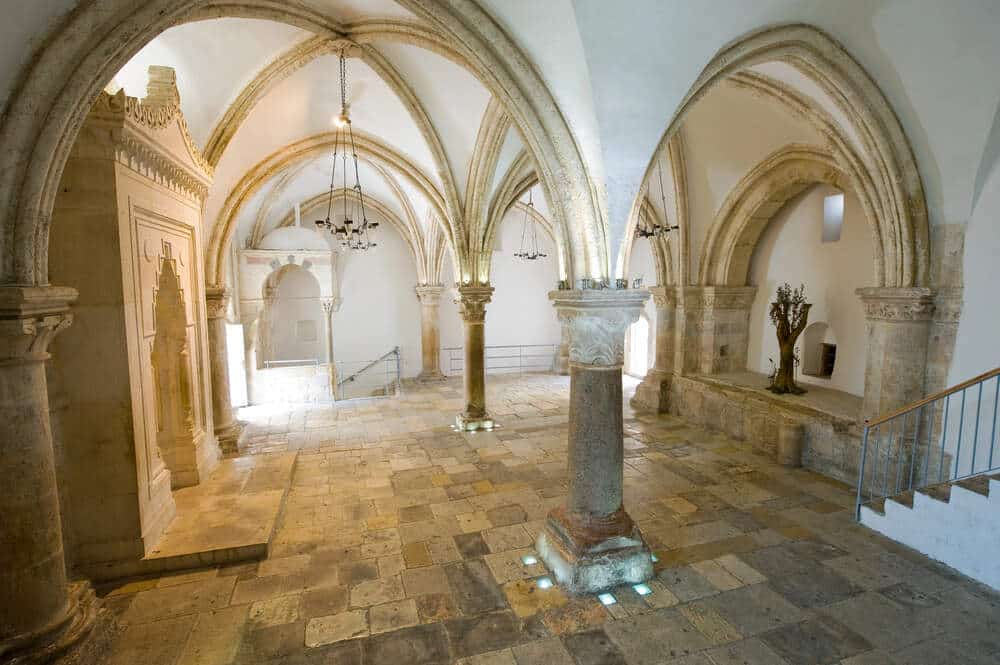
The Cenacle, recognized since the earliest centuries as the site of the Last Supper, Pentecost, and the residence of the first Apostolic Church, was transformed in the 4th century into a basilica called “Holy Zion,” considered the “Mother of all Churches.” Rebuilt by the Crusaders in the 12th century as “Saint Mary on Mount Zion,” only the Cenacle chapel survived after its destruction by the Moors in 1219.
In 1333, the Franciscans received the site as a donation from the Kings of Naples, establishing there the first headquarters of the Custody of the Holy Land. They were expelled in 1552 by the Ottomans, who converted the site into a mosque.
After their expulsion, the Franciscans settled in the Convent of Saint Saviour, where they founded the first Catholic parish in Jerusalem. In 1936, they returned to the vicinity of Mount Zion at the convent of Saint Francis Ad Coenaculum, where they built a chapel in memory of the Eucharist. In 2014, the complex was restored, adding a chapel dedicated to the Holy Spirit and a garden for pilgrims.
Today, the Cenacle is under Israeli administration. Since 1948, the upper room has been open to pilgrims, and the Franciscans are permitted to celebrate there on Holy Thursday and Pentecost. The lower section was converted into a synagogue housing the Tomb of King David.
Despite being the place of the institution of the Eucharist, Catholics are not allowed to celebrate Mass there except on special occasions.
- For more information about this holy place, visit the website of the Custody of the Holy Land.
- Location: Q6CH+WVC Jerusalem, Israel
9. Basilica of the Agony (Gethsemane, Jerusalem)
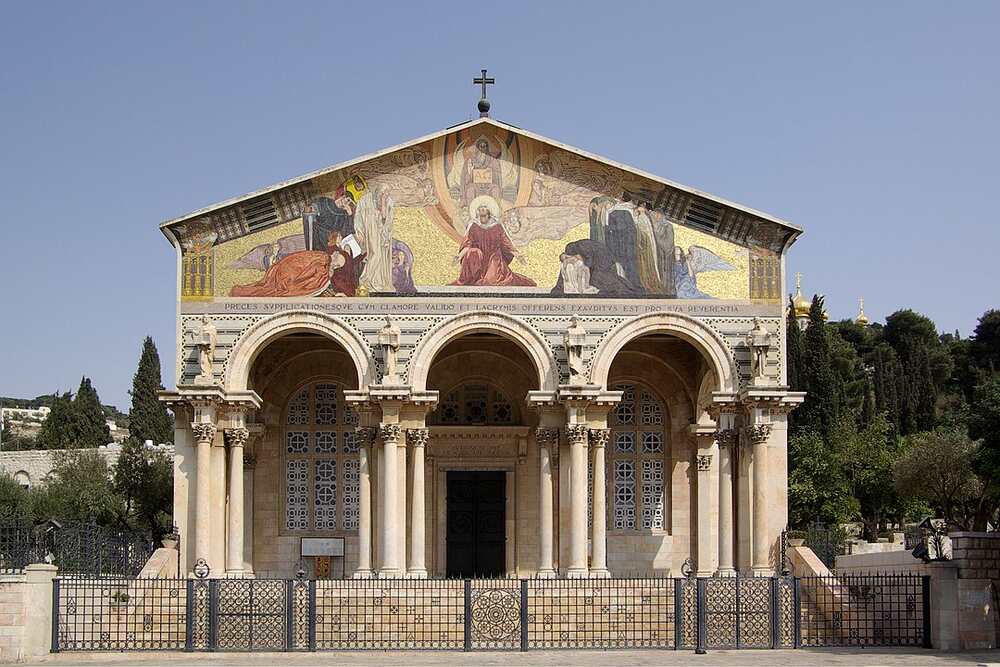
The Basilica of Gethsemane — also known as the Church of All Nations — is located on the Mount of Olives in Jerusalem, next to the Garden of Gethsemane, where, according to tradition, Jesus prayed before His arrest. The present church, designed by Antonio Barluzzi between 1919 and 1924, was built over the remains of a 4th-century Byzantine basilica and a 12th-century Crusader chapel.
Funded by various nations — including Argentina, Mexico, Italy, and France — the church takes its name from this international collaboration, represented in the ceiling mosaics.
Its neo-Byzantine facade depicts Christ as the mediator between God and humanity, and inside the sanctuary lies the rock where Jesus prayed in agony.
- For more information about this church, visit the website of the Custody of the Holy Land.
- Location: Q6HQ+PWC Jerusalem, Israel.
10. Basilica of the Holy Sepulchre (Old City of Jerusalem)
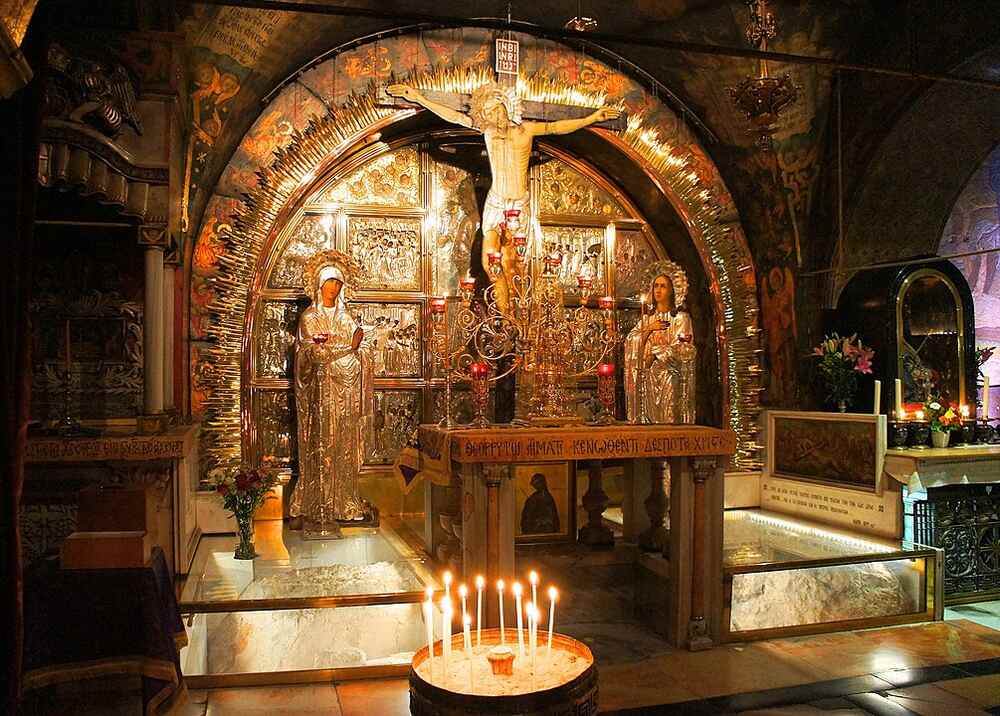
The Church of the Holy Sepulchre — also known as the Church of the Resurrection or Anastasis — located in Jerusalem’s Old City, is considered the holiest site in Christianity and has been a central destination for pilgrims since the 4th century.
The basilica stands over the two key sites of Christ’s Passion and Resurrection, both traditionally enclosed under the same roof:
- Calvary (Golgotha): The hill where Jesus was crucified. Pilgrims ascend a staircase within the church to reach the altar, where they can touch the original rock through an opening in the floor.
- The Empty Tomb (Holy Sepulchre): The cave where Jesus was buried and rose from the dead enclosed within a 19th-century chapel known as the Edicule.
The emperor Constantine the Great, after his mother Helena identified the site, ordered the demolition of an earlier Roman temple (to Jupiter or Venus) and the construction of a complex that included a large basilica (Martyrium) and a rotunda that housed the tomb (Anastasis). It was consecrated in the year 335.
Over the centuries, the church suffered severe damage and destruction, particularly between the 7th and 9th centuries. The Crusaders restored and unified all chapels under one roof in 1149, giving the structure a form similar to the one we see today. It later deteriorated under Ottoman rule. A devastating fire in 1808 led to a reconstruction in Ottoman Baroque style. In 2016–2017, a major restoration of the Edicule revealed the original limestone burial slab for the first time in centuries.
The church is jointly administered by six Christian communities, mainly the Greek Orthodox Church, the Catholic Church (through the Franciscans), and the Armenian Apostolic Church.
As a symbol of this neutrality, the key to the main door has been under the uninterrupted custody of two Muslim families from Jerusalem (Nuseibeh and Joudeh Al-Goudia) since 1187.
Other significant sites inside the Basilica include:
- Stone of Unction: A marble slab at the entrance of the church where, according to tradition, the body of Jesus was prepared for burial.
- Chapel of Adam: It is located under Calvary; tradition says that Jesus was crucified over the burial place of Adam’s skull.
- Chapel of Saint Helena: where the crusaders believed that Helena found the True Cross.
- Syriac Chapel: Contains an opening to an ancient Jewish tomb from the time of Jesus (type kokh), which some identify with the tomb of Joseph of Arimathea and Nicodemus, and which is evidence that the place was outside the city walls.
-
Rotunda and Catholikon: The Rotunda is the circular space surrounding the Edicule. The Catholikon is the central nave of the crusaders, which today functions as the Greek Orthodox cathedral.
- For more information about this church, visit the website of the Custody of the Holy Land.
- Location: Q6HH+9RX Jerusalem, Israel.
If you want to visit these churches, remember that your Catholic Mass Times app will be your best travel companion. It will help you find local Mass schedules, Confession services, and Adoration times, ensuring that your spiritual pilgrimage is always connected to the sacraments. Download it now.
The Holy Land is the living memory of the Son of God’s time on earth. Here you can walk in His footsteps, encounter countless brothers and sisters in Christ from around the world seeking the same grace, and console our fellow Christians who still live there — many of whom suffer persecution for their faith.
To make the most of your pilgrimage, we recommend bringing a guidebook with explanations and information about the sacred sites, along with meditations, Scripture passages, and prayers to help you live this journey in a true spirit of contemplation.
It is also highly advisable to travel through the Holy Land with your Bible — especially the Gospels. You can read the passages beforehand to prepare your heart, or during your visit to meditate more deeply. How beautiful it would be to go with a group of pilgrims accompanied by a priest, so that he can celebrate Holy Mass in the sacred places and provide spiritual guidance throughout your journey.
What are the most Important Churches to Visit in the Holy Land?
Among the most significant are the Basilica of the Annunciation in Nazareth, the Basilica of the Nativity in Bethlehem, and the Church of the Holy Sepulchre in Jerusalem — where the main mysteries of Christ’s life are remembered.
Why is the Holy Land the most Important Destination for Catholics?
Because Jesus lived, preached, died, and rose there. Each holy place allows you to relive the Gospels and deepen your faith through prayer and pilgrimage.
What is Needed to Make a Pilgrimage to the Holy Land?
Besides a valid passport, it is recommended to travel with an organized group led by a priest, so that Holy Mass can be celebrated during the journey. Bring a Bible and a spiritual guidebook to make the most of each visit.
When is the Best Time to Travel to the Holy Land?
The months of March to May and September to November offer mild weather and fewer crowds. At Easter and Christmas, pilgrimages are especially significant.
Which Application Helps to Find Mass Schedules in the Holy Land?
The Catholic Mass Times app allows you to locate nearby Catholic churches and check Mass, confession, and adoration schedules in real time during your trip.

